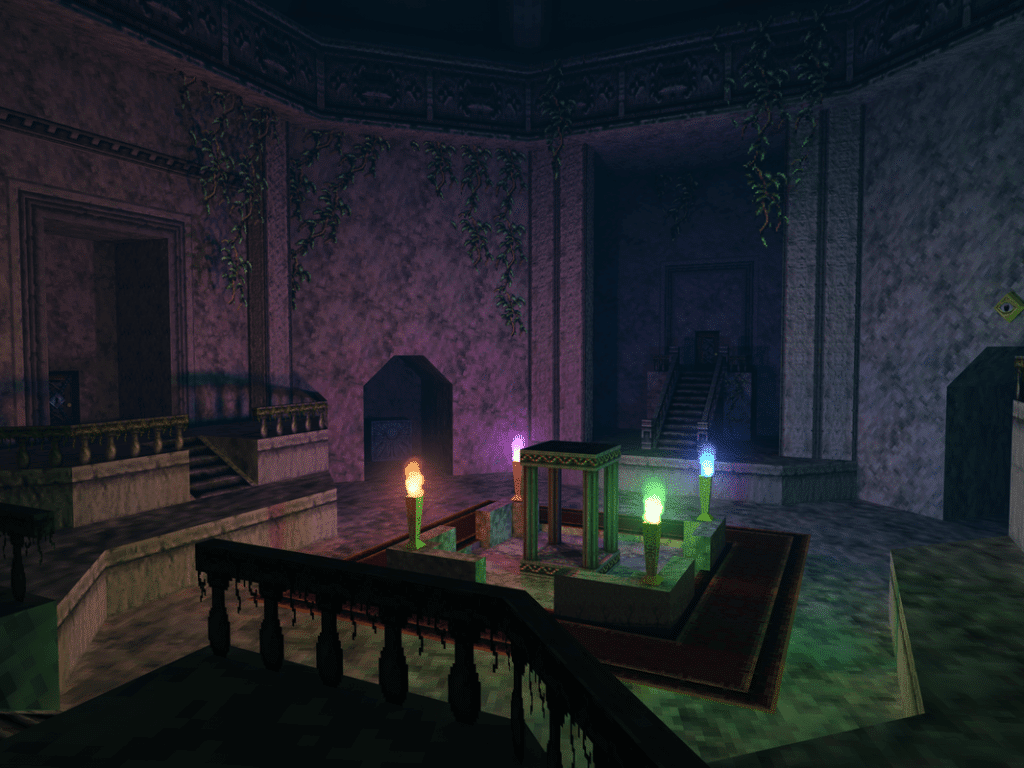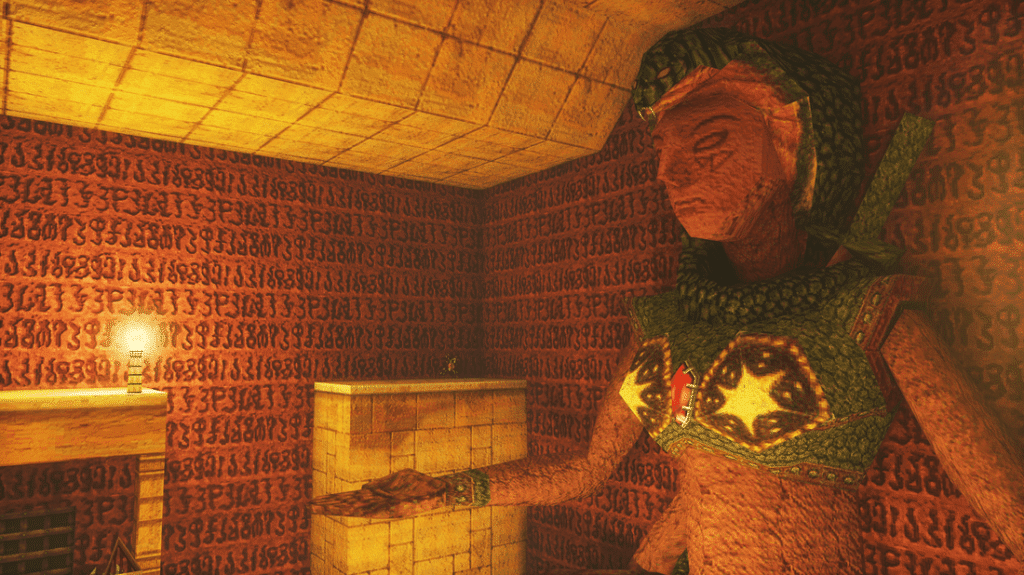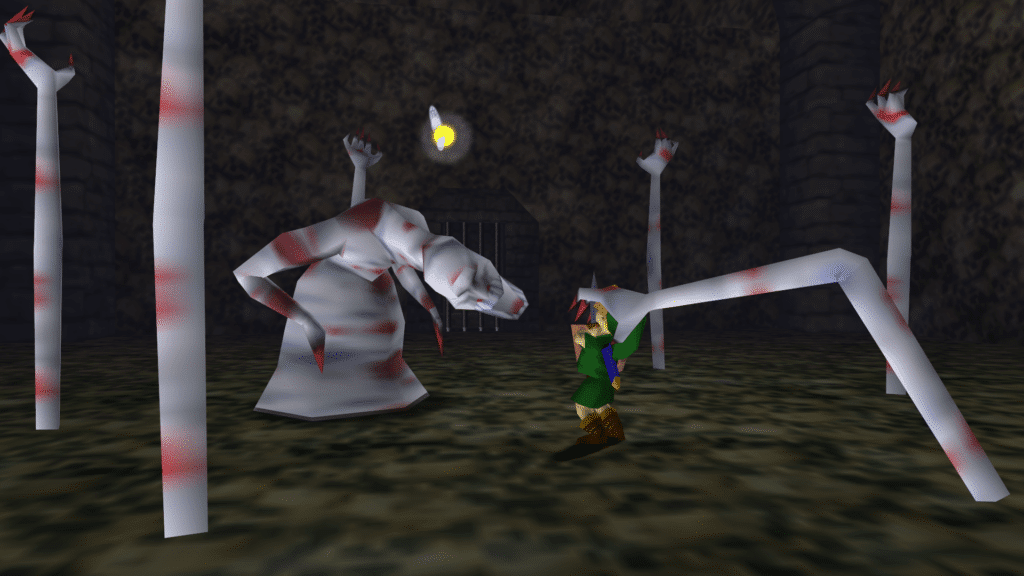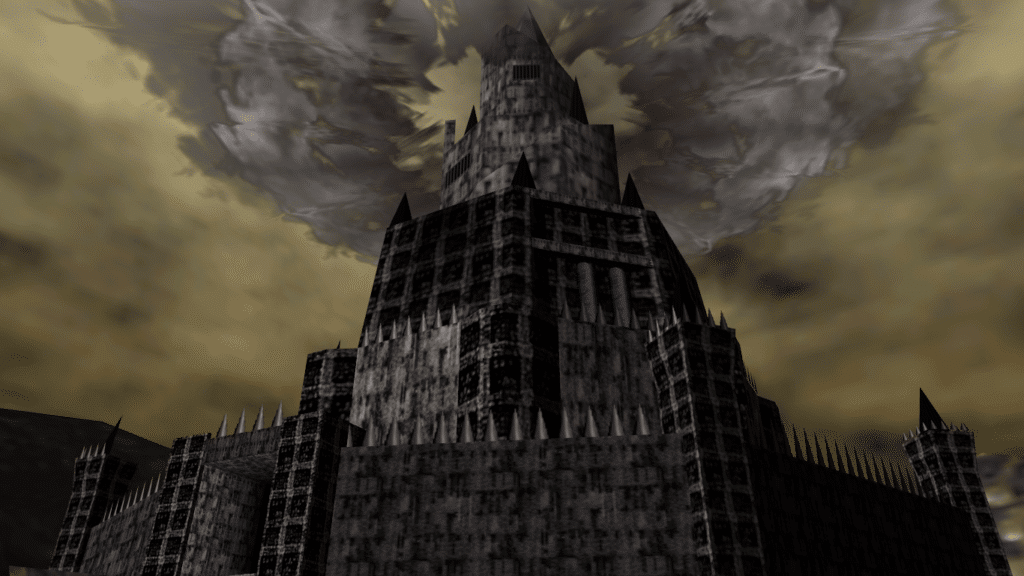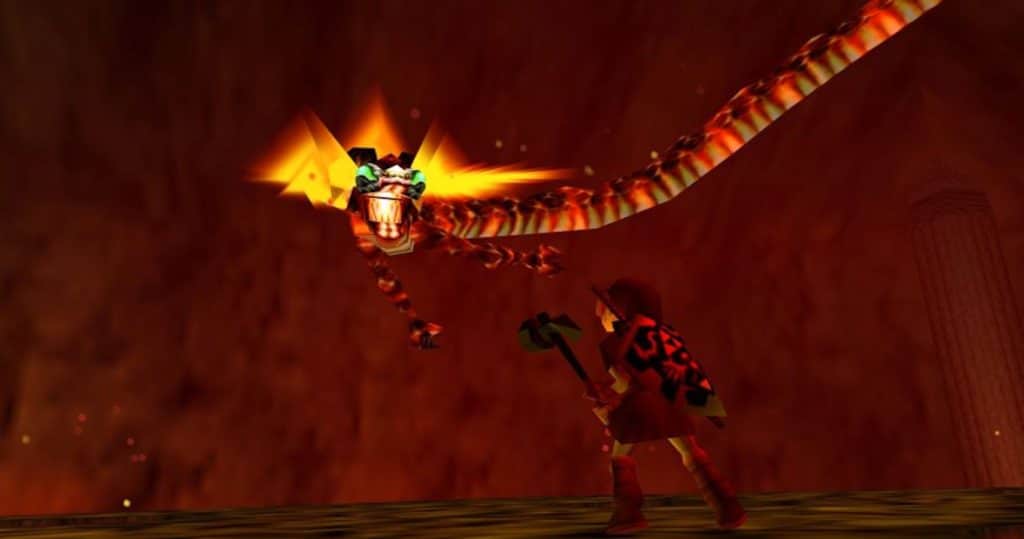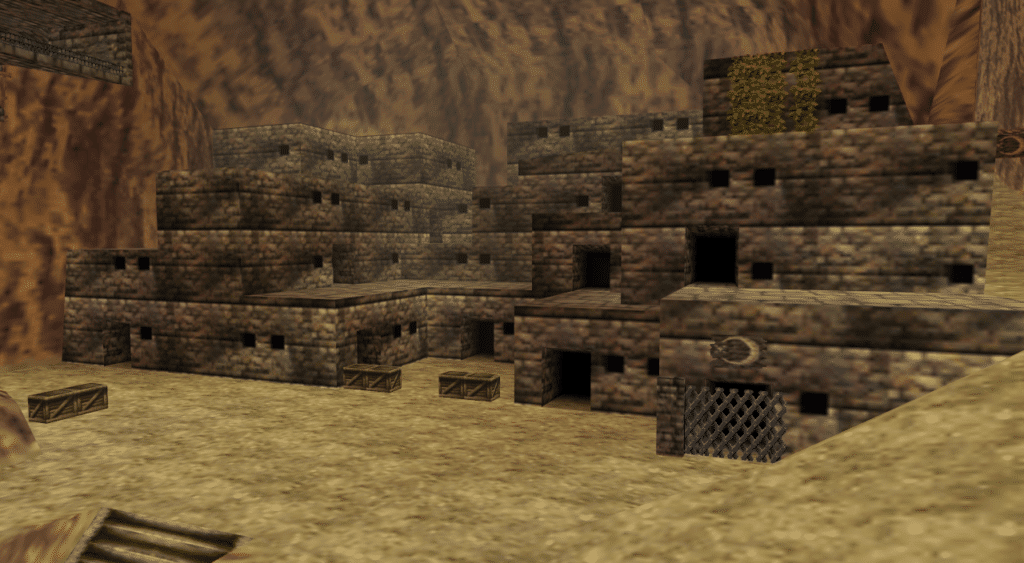-Shiek
The Legend of Zelda Ocarina of Time is the greatest game ever made. Don’t get me wrong, it’s not my personal favourite, but I’m not talking opinions here (I’ve saved that for the Top 10 below). Objectively OoT has done for video games what slicing has done to bread. It’s groundbreaking, inspirational, packed full of quality, and just a bloody good time all-round. It’s consistently one of the highest-rated games by both critics and players – with a never-beaten score of 99 on Metacritic, its accolade of being the “GOAT of video games”, isn’t going anywhere fast.
OoT stands out for many things; incredible gameplay, gripping story, and pioneer of the sandbox mechanic. However, (with OoT and all the Zelda games that followed), the most common thing Zelda-fans really look at when judging an entry in the series, is the dungeons. Complete explorative freedom is common in Zelda games, but the dungeons act as cornerstones to progress the story. They also tend to be Petri dishes of enemies, puzzles and platforming – all key ingredients to that delicious Zelda recipe. It’s then perhaps fitting that OoT is the standout entry in the series when it comes to dungeons, delivering on both the quantity and quality. When including mini-dungeons, OoT has an impressive dozen for you to venture through – Twilight Princess is the only other title to offer double-digit dungeons at 11!
I first played OoT in 1998 – my 9-year-old mind was blown wide open. Everything seemed so vast, running across Hyrule felt like it would take a millennium. With the exception of Majora’s Mask, I’ve replayed OoT more times than any other game. I’m now “technically speaking” a grown-man and although that feeling of vastness has disappeared somewhat, my joy and excitement adventuring through each dungeon has never wavered – each playthrough is as good, if not better than the last. So, I wanted to take some time to go through my favourite dungeons in “The Legend of Zelda: Ocarina of Time”.
Did You Know?
- Ocarina of Time is the highest-rated video game title on Metacritic.
- Sold 2 million copies in the first 2 months!
- It’s the first 3D Zelda title in the series.
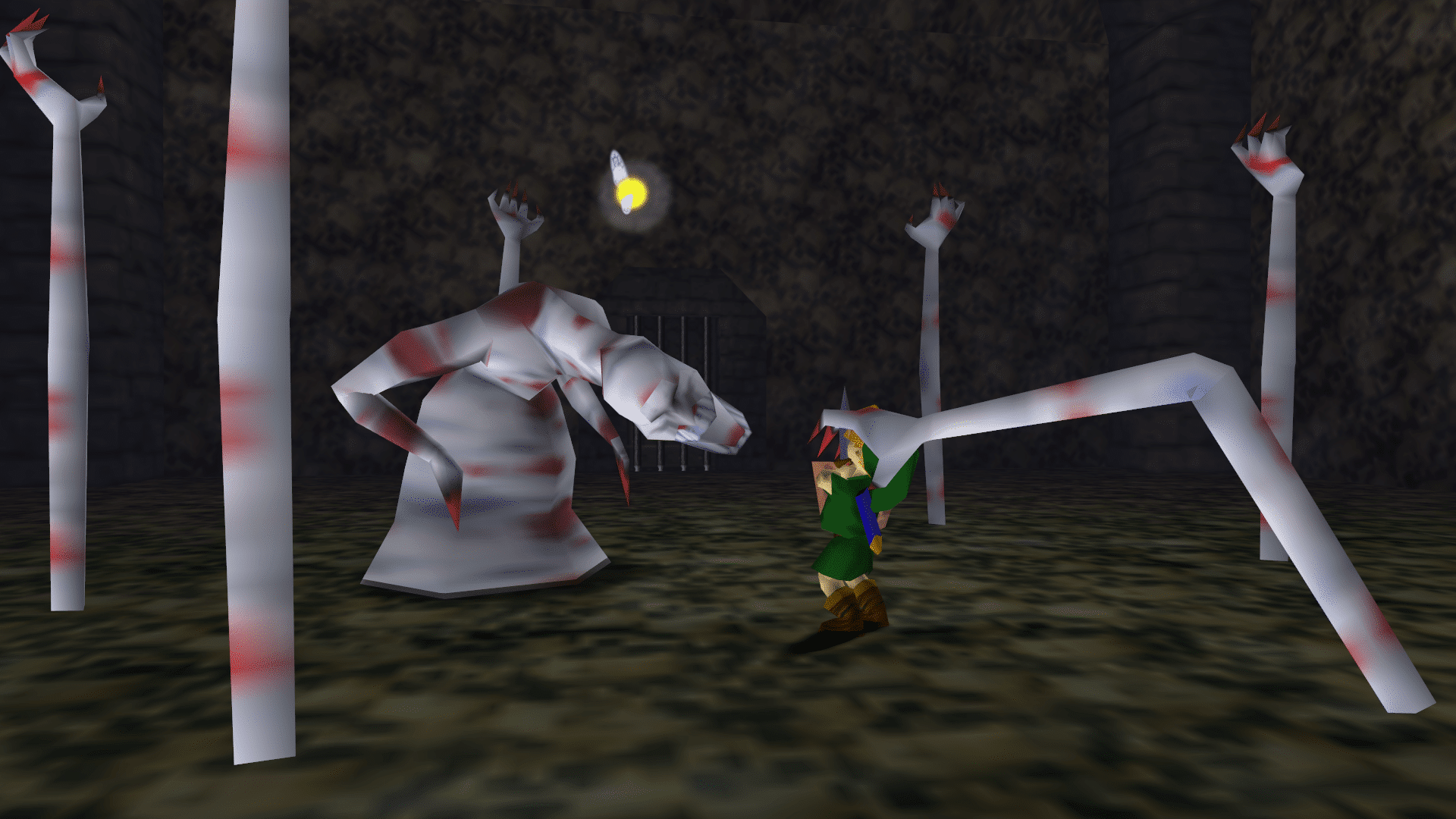
10) Bottom of the Well
Kicking off the list with a mini-dungeon, Bottom of the Well is a creepy and eerie underground chamber hidden within Kakariko Village. Completely optional, this dungeon holds the Lens of Truth, which isn’t necessary for finishing the game but does help later in places like the Shadow Temple and Haunted Wasteland. Bottom of the Well has all the makings of an 80’s slasher film – blood-stained walls, murky water and chains dangling from the ceiling. The crypt-like aesthetic is reinforced with the enemies lurking within – ReDead, Gibdos and Floormasters are ten a penny down here. It’s a short and sweet dungeon, but not without its frustrations as, without the Lens of Truth, you’ll find yourself often falling through invisible floors, halting your progress. I do however like that you have to complete this dungeon as Young Link, giving you a reason to switch back from Adult Link later in the game – don’t wish away your youth kids!
9) Dodongo’s Cavern
The second dungeon that you’ll venture through as Child Link is Dodongo’s Cavern. Located on the Death Mountain Trail, Dodongo’s Cavern holds the main food source for the nearby Goron residents – but it’s been blocked up by that pesky Ganondorf in retaliation against the Gorons for not revealing their Spiritual Stone secrets. After “blowing the bloody door off” the entrance you’re welcomed by a huge cavernous space and a protruding Dodongo skull in the distance. It’s a lot larger than the first dungeon, composed of several larger cave-esque rooms all linked with narrow tunnels. However, where I think Dodongo’s Cavern really succeeds is its variety. There’s a really nice balance of puzzles and enemies in this dungeon. Whether it’s blowing up a room full of smaller Dodongos, or blowing up an entire staircase, the dungeon’s item – the Bomb Bag – comes in handy for blowing up pretty much everything here. Where Dodongo’s Cavern “caves-in” is the personality, it’s quite a plain dungeon compared to some of the others on this list and doesn’t really have a theme/gimmick that makes it stand out. It’s a solid Child Link dungeon but resides in the shadows of other OoT dungeons.
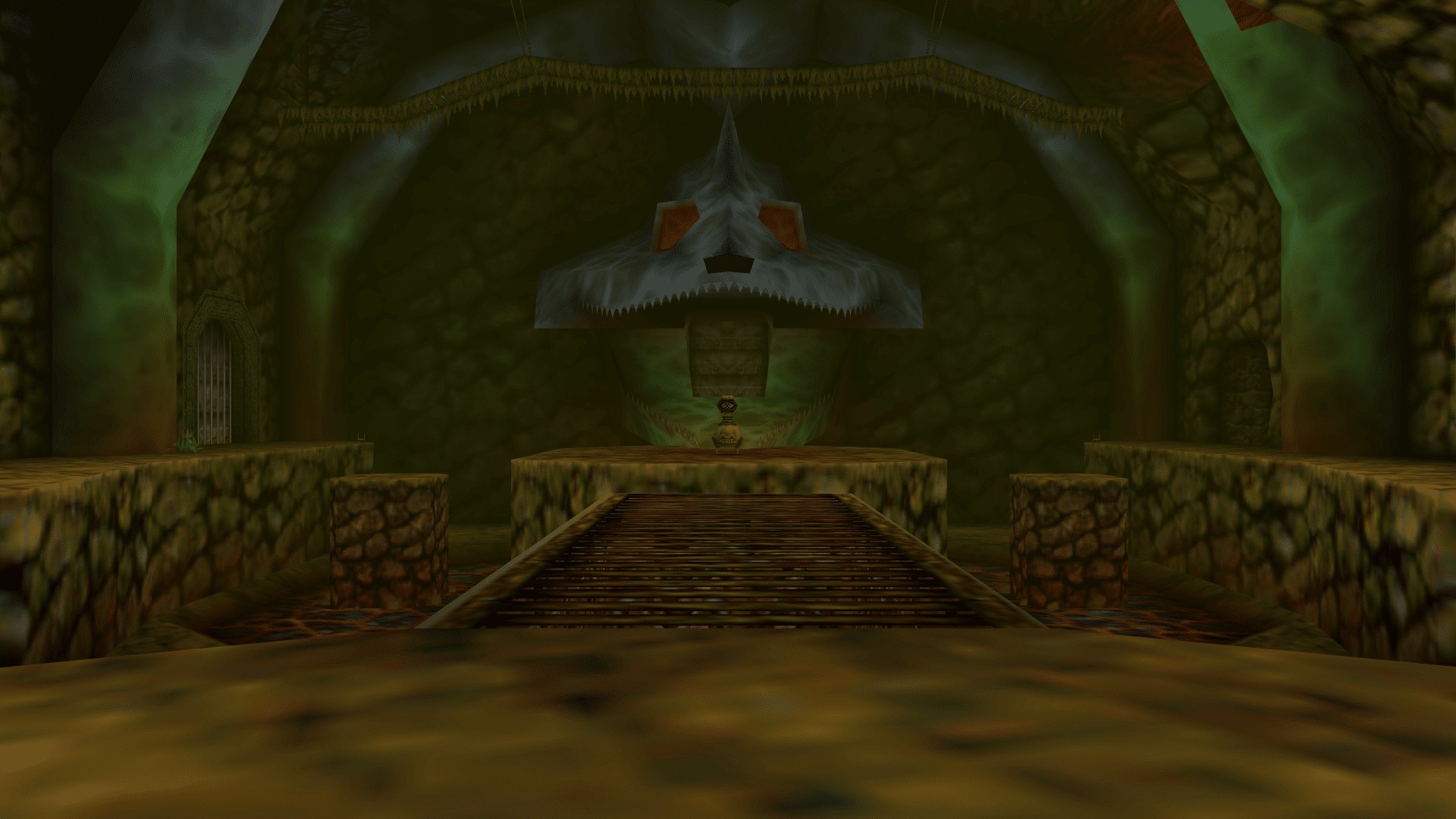
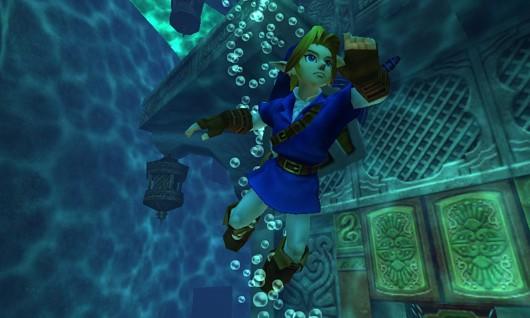
8) Water Temple
The ultimate marmite dungeon in the Zelda series – even though most people do indeed hate it – is the Water Temple. Look, I think if I were making this list purely on the N64 iteration of the Water Temple this thing wouldn’t be here. The repetition of pausing the game to equip/unequip the Iron Boots is massively frustrating and really does leach the fun out of the game. However, I think Grezzo did a really good job of adding quality of life changes for the 3DS version. Making the Iron Boots an item that you can turn on/off at the flick of a button meant no more pausing – and no more sobbing. The other thing people often rage over is the water levels. This dungeon requires Link to play Zelda’s Lullaby at certain points to raise or lower the water, allowing you to reach different areas of the dungeon to progress. I can see how it’d be easy to slip up as you need to make quite a few adjustments, but it was something I personally never struggled with. I think once you’ve got your head around it, you get a clearer picture of how to beat the dungeon. Negatives aside, I think the Water Temple has a strong theme, good aesthetic, and one of the best mini-bosses in the series – so I’m glad it’s made my list.
7) Gerudo Training Ground
The second and last mini-dungeon on this list (spoilers – sorry Ice Cavern) is Gerudo Training Ground. This mini-dungeon is a cornucopia of rooms that each have a different theme – I’ve read in places that some people aren’t fans of this feature, as it creates a feeling of disjointedness – but they say “variety is the spice of life” and personally I think it’s a neat touch. The central area of GTG is a maze of locked doors. Each of the “mini-themed-rooms” provides a small key once you’ve completed the puzzle or tackled the enemies, and you ultimately collect enough of these to work towards the treasure at the centre of said maze. What I really like about GTG is that you need a lot of weapons to be able to make progress. As is common in Zelda, the item you obtain within the dungeon is usually the only one you need to beat all puzzles and the boss. However, in GTG you’ll need the Fairy Bow, Iron Boots, Lens of Truth and more if you want to get to that sweet treasure chest music at the end of this delightful miniature dungeon.
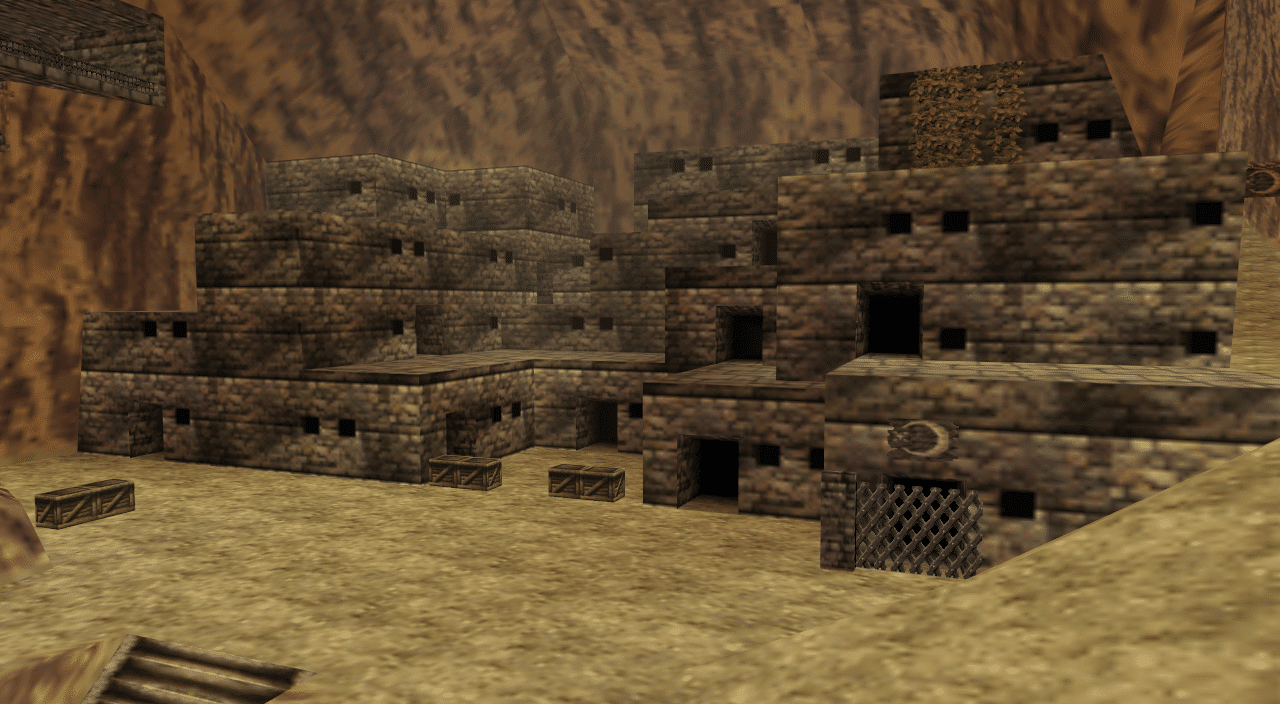
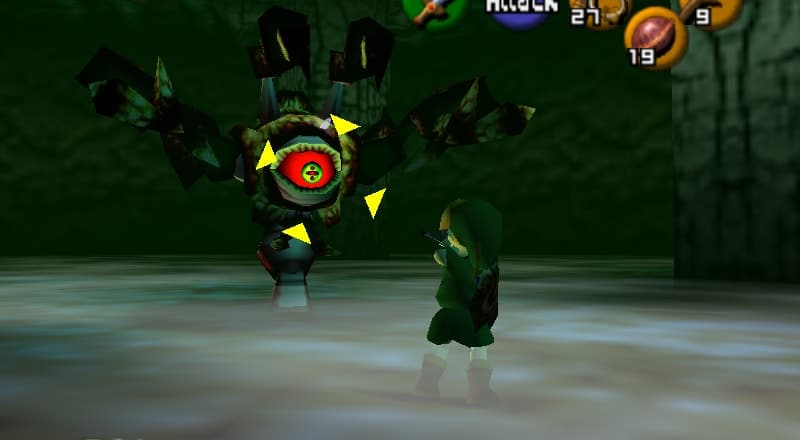
6) Inside of the Deku Tree
The starter-dungeon in each of the Zelda series is a big deal. Besides usually being grass-themed, they set the stage and expectation of how the rest of the dungeons will play out in a particular entry. That being said, Inside of the Deku Tree is arguably one of the most iconic starter-dungeons in the series. With OoT being the first 3D Zelda title, there was no way to predict how the dungeons would work. Until OoT every dungeon was tackled from a top-down perspective with each room being square or rectangular, so going into the Deku Tree was completely mind-shattering. You’re immediately welcomed by a huge cylindrical space with various levels, routes to take, and nik-naks – it was absolutely groundbreaking within the series. It intuitively, but not obviously, helps guide you, giving you access to the Map early (and perhaps leads you with some annoying quips from Navi). There’s a bum-clenching lofty leap through a spider’s web to a watery pool, rooms of puzzles, and just an incredible boss fight against Queen Gohma. Having to use the first-person view to lock eyes/eye with the Parasitic Armored Arachnid in that dank, dark room to begin the fight really paints the picture that the whole OoT experience is going to be equally detailed and fantastic (and oh boy – it is). My favourite Child Link dungeon, Inside the Deku Tree is the perfect way to begin a Zelda game, there’s just a few Adult Link dungeons that are a little bit better…
5) Ganon’s Castle
The final dungeon in OoT and where the “King of Thieves” Ganondorf resides, is Ganon’s Castle. Standing where Hyrule Castle stood as Child Link, Ganon’s Castle floats over a bed of lava, which you can only access after saving all six sages from the previous dungeons. Ganon’s Castle is composed of two “sections” – the first is a large hexagonal room with six doors representing each of the Sages saved. Behind those doors are puzzle-themed rooms that have (loose) connections to the corresponding dungeon. It offers a nice bit of variety, similarly to Gerudo Training Ground, which is fitting given Ganon’s Gerudo heritage. Once you’ve cleared all six rooms, the barrier surrounding the centre column disappears, allowing you to proceed to the second section – a spiral ascent to the top of the castle, and Ganondorf. The ascent in particular is super immersive – there’s a constant loop of organ music that grows in volume the closer you get to the summit. The cutscene that follows when you enter the final room shows that it was in fact Ganon who was busking away. He’d make a fine musician should this Hyrule-domination thing backfire. What persues is a boss fight with Ganondorf including the usual staples like dead man’s volley. Once victorious, Ganondorf uses the last of his power to hit the self-destruct button on the Castle, forcing you to flee to the bottom with Zelda whilst dodging small fires, falling rocks, and Stalfos. There is of course the final fight, but I feel like this is a stand-alone thing. Overall, it’s a fantastic final Zelda dungeon that brings together everything you’ve learnt throughout the game and gets you to use them to thwart that troublesome warlock.
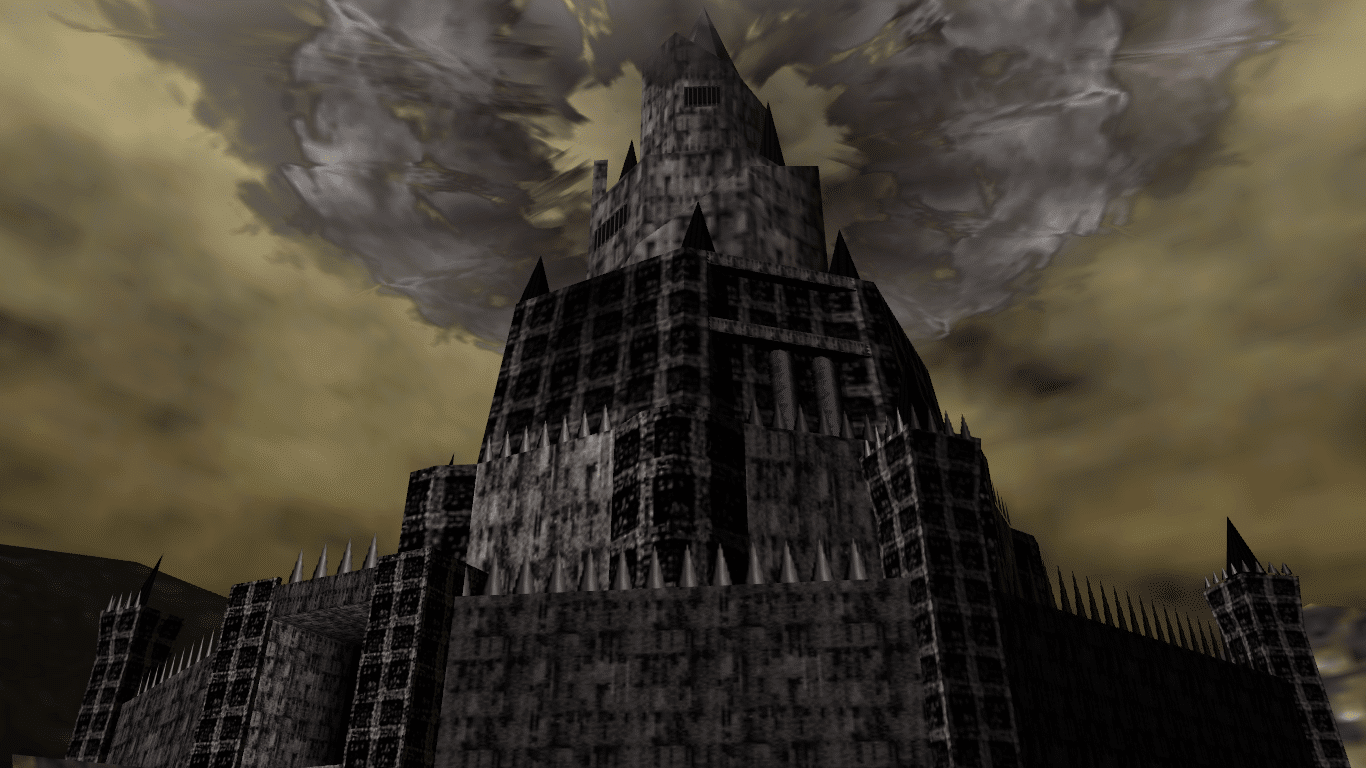
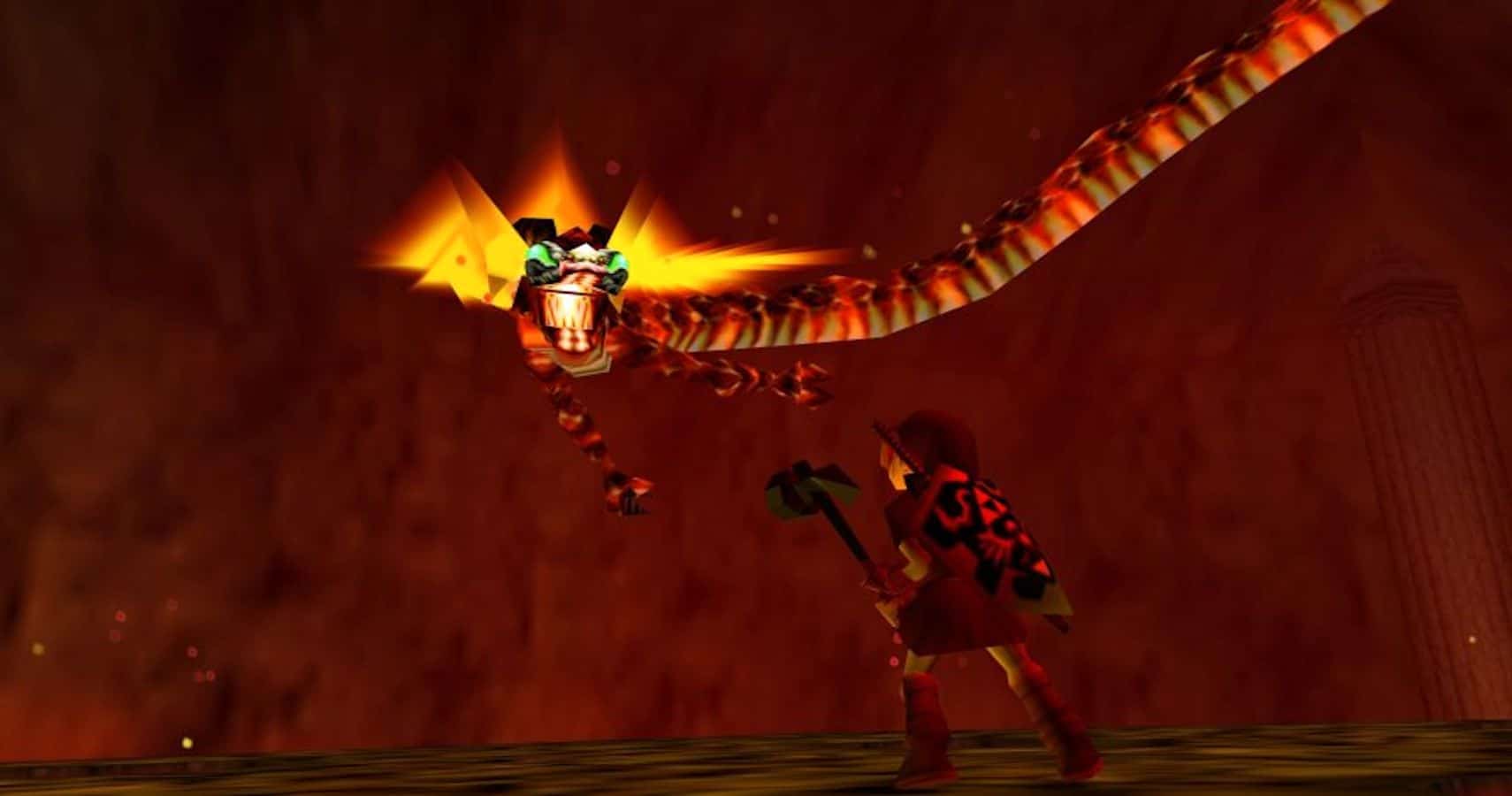
4) Fire Temple
The first three dungeons in OoT for both Child and Adult Link follow a forest, fire and water theme, and the Fire Temple which you venture through as Adult Link is a big improvement on Child Link’s Dodongo Cavern. Where Dodongo’s Cavern touches on the heat element here and there, the Fire Temple absolutely runs with it, and shouts about it from the hilltop – or volcano top. I say that, as the dungeon is located within Death Mountain (a frickin’ active volcano) and a large majority of the rooms make sure you don’t forget this. Whether it’s one of the earlier rooms which has a questionable, rickety bridge over a bed of lava that would definitely fail a health & safety check, or the room where a wave of fire actually chases you down, this dungeon really turns up the…heat (please don’t leave). Luckily, Link’s Goron Tunic means you won’t burn to a crisp whilst platforming the high-celsius environment, or whilst you fight the many Fire Keese, Torch Slugs and Red Bubbles. What I love about this dungeon is that you get to save Gorons – after a brief chat with Darunia at the start of the dungeon, you’re sent off to save his fellow Goron-buddies. Each one is super grateful and you’ll often find a treasure chest in their little, depressing prisons. It’s a unique little touch you don’t get elsewhere in the game – couple this with the absolute powerhouse Megaton Hammer weapon and cinematic boss fight – and you’ve got a solid dungeon entry.
3) Shadow Temple
The top three dungeons on this list shouldn’t be any surprise to the OoT fans out there. They’re probably at the top of 99% of similar lists – but it’s for good reason. The Shadow Temple impressively takes the aesthetic and theme of the mini-dungeon that comes immediately before it (Bottom of the Well) but completely nails it whilst simultaneously avoiding a feeling of repetition, or retreading old-ground. What the Shadow Temple delivers is a dark, depressing, and doom-filled dungeon with misery seeping out of every brick. Guillotines, rotating scythes, skeletal Stalfos, poison water – this dungeon has it all. Shadow Temple experiments and differs from previous dungeons, feeling more like a sequence of staged set pieces due to its linear progression, rather than being more exposed and open. The constant downward slope, revealing more disturbing Hyrule truths is like a descent into madness, before you peel back the curtain at the end to see the evils lurking behind. A nice little touch with this dungeon is how you enter – there’s a raised platform with numerous unlit touches that obviously need some attention. It’s the only instance in the game where you have to use Din’s Fire and it’s refreshing when a game keeps giving you reasons to use some of the previously obtained items.
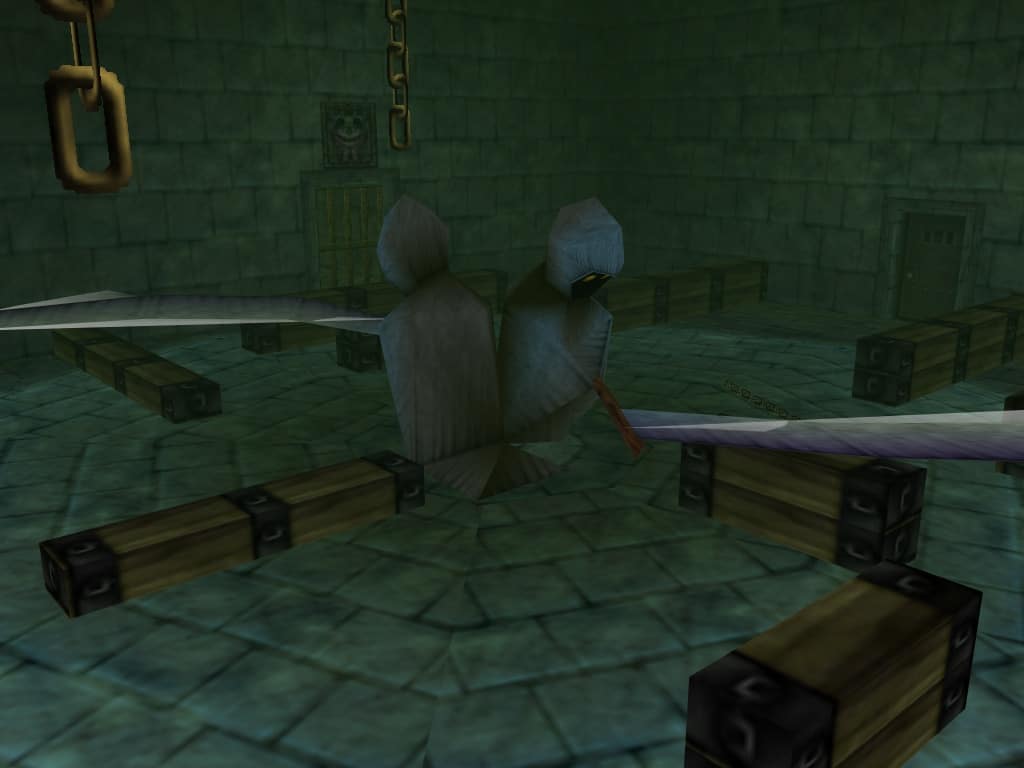

2) Spirit Temple
The number 1 and 2 spots on this list, for me, are so close that they’re swapping almost constantly. When I wrote this list – it just so happened that I put the Spirit Temple second. But catch me on a different day, and it’d probably be first. Past Gerudo Valley and the Haunted Wasteland lies this delicious dessert secret. The Spirit Temple is an incredible mix of originality and immersion. The obvious Egyptian/Mid-Eastern architecture and iconology is backed up by its orchestral theme, strong with instruments such as the gong, duduk and darbuka (or goblet drum). The dungeon is an evident place of worship, with a large middle chamber housing the Goddess of Sand, the deity of the Gerudo, but feared by the surrounding Hylians. The dungeon feels rich in lore, religion and history, and portrays a sense of higher power. Not only this, but the challenge and progression is also unique. It’s the only dungeon that you have to play as both Child Link and Adult Link. Venturing through first as Child Link, you’re given a glimpse of the grandiose structure, and find unreachable areas in your small stature. However, come back 7 years later as Adult Link, and further paths and deeper areas of the dungeon become available. That’s not the only instance of duality in the dungeon either, there’s the boss – Twinrova – the two open palms of the Goddess statue, and even the Spirit Medallion which has a nod to Yin and Yang. Here comes the change of mind… I’m considering swapping it up to the first spot right now!
1) Forest Temple
Not only is the Forest Temple my favourite OoT dungeon, but it’s a strong contender for my favourite Zelda dungeon in the entire franchise. Buried deep within the Lost Woods at the end of the Sacred Forest Meadow, this dungeon – seemingly – comes out of nowhere. As Child Link, you map out the Lost Woods early on in the game, assuming there’s nothing more for it to offer. However, come back as Adult Link, and the Forest Temple entrance is right there, cleverly placed out of reach but now accessible with the nifty Hook Shot. It’s like you couldn’t see the wood for the trees…ahem. The first Adult dungeon, the Forest Temple is a perfect concoction of immersion, aesthetic and intensity. The creepy and eerie architecture of this corroding “haunted mansion in the woods” is magnificently and perpetually reinforced by the sinister music. There’s a part of the Forest Temple theme that always sounded like bones clashing together and as a 9-year-old boy, it had me on edge. It’s no surprise that the skeletal Stalfos and “bone-masked” Phantom Ganon appear here – the music clearly a prelude to their terrifying presence. The dungeon is also filled with tricks – whether it’s chasing down the four Poes (named after the Little Women) through picture frames, or wandering down twisting, Escher-style hallways – the Forest Temple keeps you guessing at every turn. There are even moments of light, serene greenery and picturesque beauty in the outdoor garden sections that substantially juxtapose the dark, haunting indoor segments. It’s difficult to not let the Forest Temple come to mind when trying to think of the “perfect Zelda dungeon”, but just like OoT being the greatest game of all time, I think it’s an accolade the Forest Temple deserves.
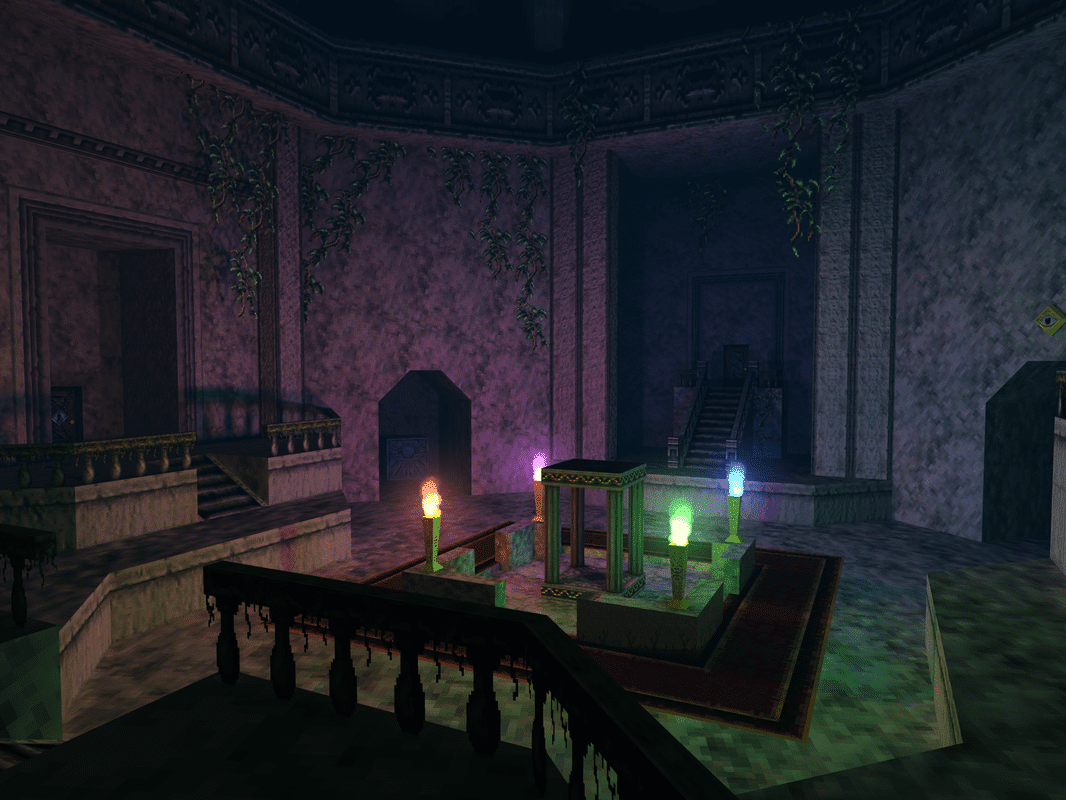
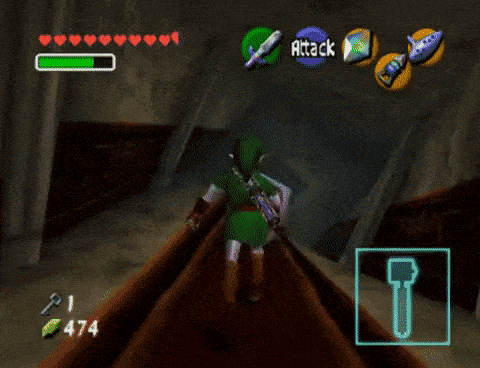
From haunted woodland mansions to being inside a giant fish, the OoT dungeons sure are diverse, creative and – sometimes – a little weird. However, each dungeon in the game contributes to that wholesome OoT experience. Yes, some are better than others, but each dungeon has a little piece of that 99% Metacritic score and the game just wouldn’t be the same without each of these dungeons (large or mini). Now if you excuse me, it’s time I go boot up my copy of The Legend of Zelda: Ocarina of Time.

